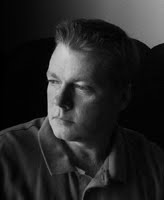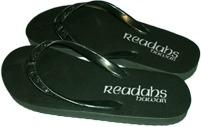A Haole Writes…A Haole Reads
Paul G. Bens Jr.
And that is when I became fascinated with Hawai‘i, the history of it, the literature, the people. I began devouring everything I could read or listen to about the Islands.
(continued from part 1)
 At first, this was frustrating to me. All I could find literature-wise were novels or short stories that read like a travel brochure or, worse, where the Hawaiian people were depicted solely as these “exotic, mystical creatures” that entranced white people. Given that I’m a gay writer, I was particularly interested in literature that focused on the gay experience in Hawai‘i, but most of what I found in both mainstream and gay fiction was little more than objectification, an entire people fetishised for mass consumption, their depiction as offensive to me as the “noble savage” stereotype that plagues Native Americans, or the “model minority” view of Asian Americans.
At first, this was frustrating to me. All I could find literature-wise were novels or short stories that read like a travel brochure or, worse, where the Hawaiian people were depicted solely as these “exotic, mystical creatures” that entranced white people. Given that I’m a gay writer, I was particularly interested in literature that focused on the gay experience in Hawai‘i, but most of what I found in both mainstream and gay fiction was little more than objectification, an entire people fetishised for mass consumption, their depiction as offensive to me as the “noble savage” stereotype that plagues Native Americans, or the “model minority” view of Asian Americans.
But then I discovered HRH Liliu‘okalani’s Hawai‘i’s Story by Hawai‘i’s Queen, which led me to The Betrayal of Liliu‘okalani by Helena Allen, which pointed me toward Gavan Daw’s Holy Man: Father Damien of Moloka‘i, which led to The Separating Sickness: Mai Ho‘oka‘awale by Ted Gugelyk and Milton Bloombaum. Slowly but surely I began to learn of the real Hawai‘i, of the history of the Kingdom, the overthrow of the monarchy and of the people who had lived and died for their country. I was fascinated, in awe, and more than a bit angry that the very good education I had been afforded in my life had so utterly erased this history just as it had the history of Native Americans and African Americans.
On the literature front, my hunt was a little less successful…at first. Eventually, however, I discovered honorary-Hawaiian Alan Brennert’s amazing historical novel Moloka‘i and devoured it, finding the emotion and characterizations to be simply flawless. His follow up, Honolulu, moved me just as much and introduced me to the story of Joseph Kahahawai. I immediately snatched up David Stannard’s Honor Killing, an expert examination of Kahahawai’s murder and the so-called “Massie Affair.”
Meanwhile, I was fortunate enough to discover the Hawaii Book Blog, which caused my to-be-read list to grow exponentially and introduced me to the incredible works of Milton Murayama whose All I Asking For Is My Body is, I think, one of the most important and moving pieces of Hawaiian literature I have ever read. At about the same time, the publisher of my first novel, Kelland, signed a new author named Lavinia Ludlow [http://www.goodreads.com/author/show/4105933.Lavinia_Ludlow] who had spent a large portion of her youth growing up in Hawai‘i. She told me of the works of Lois-Ann Yamanaka and Wild Meat and the Bully Burgers. I was stunned by all that I was reading.
In the midst of all this, my little erotic novelette Mahape came out and I developed, for the first time in my writing career, a bit of a following. Critics were kind and my readers were amazing. They’d loved the story of Toshi and Kristopher and were curious as to whether I would ever revisit the characters. As New Year’s Eve 2009 rolled around, I decided I wanted to thank my readers by doing a short little follow-up piece to Mahape.
I sat down intent upon writing another piece of erotica that followed my Hawaiian character, Kristopher, but I struggled with it. I wanted to write something my readers would love, but the plethora of fiction and non-fiction I had devoured made me pause. All of these works had amazing, full Hawaiian characters, people rich with real emotion and struggles. And here I was sitting down to write a piece of titillating fiction. Was I just another a haole who’d fallen in love with the islands and appropriated them and its culture as my own? Was I about to do exactly what I hated in fiction and fetishize an entire culture? A passing mention in a very favorable review of Mahape came back to me at that moment. It was a comment about my one and only Hawaiian character in Mahape: ultimately we know little about him.
Now, as a writer, I have always been intent upon writing the world in which I live. Yes, I grew up in whiter-than-white-bread part of America, but as an adult my circle of friends is about as culturally diverse as can be imagined, and given that so much of popular media excludes ethnic (and gay) minorities, I always set out to make my literary world as broad as possible. I always strive (though I may not always succeed) to make all of my characters complex and real, people you as a reader might know in one way or another. As I sat there contemplating another story set in Hawai‘i, it became clear to me that—at least in part—I had failed in Mahape to make my one and only Hawaiian character as real and honest as possible. I decided I needed to rectify that.
So, the story became one of two best friends, one gay (Kristopher, who had been so neglected in Mahape) and one straight, his best friend Ka‘eo. The story flowed easily, transforming from a misguided attempt at erotica into a coming-of-age tale of two men, brothers-by-choice, who are proud of their heritage and whose connection is full of love and understanding. To this day, I think that story—Me Ka Hau ‘oli Makahiki Hou—is the story of which I am most proud. And it is one I could never have written had I not learned about Hawai‘i, had I not experienced the brilliance and honesty in the works of Yamanaka, Murayama, Brennert, and Liliu‘okalani and all the others.
So, what is it about Hawai‘i that inspires me? That was the point of this long and winding post, wasn’t it? Yes, it is that feeling of being home. Yes, it is the desire to know things that I simply don’t know: the long, rich and neglected history of the islands. But more than that, it is the stories of the people. It is the thousands of tales written by real Hawaiians—kanaka maoli or kama‘aina—that I have yet to discover and that should be receiving more attention in the literary world. Just from the little I’ve read, I know the power and emotions of those stories. And that excites me.
I am often asked if I will write more about Hawai‘i and my honest answer is…I don’t know. I know I want to. But I also know I have a lot to learn and if I do write more about the islands and their people, it needs to be right, honest and truthful. In the end, I’m just a haole who writes occasionally about Hawai‘i. And a haole will always be writing from the outside looking in. One day, I hope to be kama‘aina, but in the meantime there are stories out there being told from the inside, tales crafted by Hawaiians that are important, wonderful works. And I know this haole wants to read them all.




